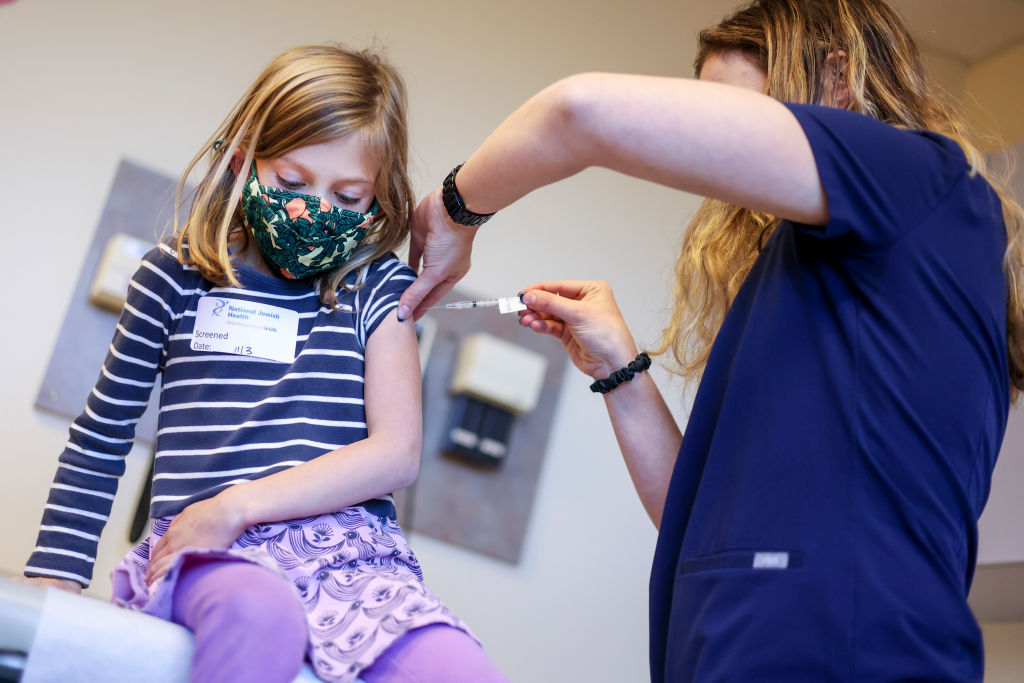
Steph Berend’s seven-year-old son has a speech disorder and sensory issues. But her efforts to see a specialist near their home in Spokane, Wash., have been stymied. Her child has been on waitlists at two different practices for more than a year, and is now on two others that are 15 months long. While Berend’s son waits to see a pediatric neurologist, he is suffering from uncontrolled muscle movements and sounds, and bullying at school, says Berend, a dental hygienist.
It’s a problem parents face across America: a shortage of pediatricians, and especially pediatric specialists. Medical students aren’t going into pediatrics at high rates, and that’s leading to coverage gaps. According to one study, about 8% fewer medical students went into pediatrics in 2020 than in 2015, while other specialties have seen big increases. In 2024, about 30% of pediatric residency programs did not fill open positions. As a result, says Sallie Permar, chair of the Department of Pediatrics at Weill Cornell Medicine in New York, “children don’t have timely access to high-quality care, especially when they have chronic or complex disease.”
One big reason that doctors aren’t going into pediatrics is money. Although pediatricians undergo the same amount of training as other doctors—and sometimes more—they are paid up to 25% less than other kinds of doctors, Permar says. Medical students, who average about $200,000 of debt, may look at pediatrics and wonder how they’ll be able to get out of debt, afford a house, or raise their own children.
Pediatrics is one of the lowest-paid areas of medicine for a few reasons. More than a third of U.S. children are on Medicaid, and in most states, reimbursement rates for Medicaid are a fraction of those for private insurance or Medicare, the health-care program for seniors. Bringing Medicaid compensation rates up to par with those of Medicare would be difficult because Medicaid is administered by the states and Medicare is federally funded.
Read More: Why Maternity Care is Underpaid.
Reimbursement rates for pediatricians who take private insurance also lag behind doctors in other specialties. Eight of the 10 lowest paid medical specialties are in pediatrics, according to a 2022 study. This is partly because of how insurance reimbursement rates are set. They are influenced by the work of a group of doctors called the Relative Values Update Committee, or RUC, convened by the American Medical Association. The RUC looks at how much work and time goes into different medical procedures and assigns values to those procedures.
Some physicians say that the RUC favors services like surgeries, rather than nonprocedural services like evaluation, which makes up a good deal of a pediatrician’s work. “As a blanket approach in this country,” says Parmar, “we have deprioritized preventative care and over-prioritized interventional care.” The American Medical Association declined to comment for this story.
The result creates challenges for doctors like Jill Neff, who runs a pediatric practice in rural Ohio. She is the only doctor in the practice, and about 60% of her patients are on Medicaid. Neff spends a lot of time talking to parents and the kids she treats, but there’s no compensation for taking time to make sure patients feel like they have the information they need. Because compensation rates are low, Neff says, she isn’t able to hire additional staff. She tries to recruit medical students, but they worry about struggling to pay off their loans if they go into rural pediatrics, she says. “They’d like to go into a practice like mine but realize they could never afford to do that,” she says.
Another reason pediatricians may be compensated less than other doctors may have to do with the large share of women in the specialty. Decades of economic literature shows that as more women enter a profession, the compensation for that profession declines. This happened with teachers, with parks and recreation employees, and with ticket agents, according to economic research. The same has happened with pediatrics. In 1975, when women represented only 23% of the pediatric workforce, pediatricians earned 93% of the average physician salary. By 2017, when women represented 63% of pediatric doctors, the field only earned 71% of the average physician salary.
“There is potentially some implicit gender bias happening with how reimbursement rates are set,” says Amy Gottlieb, a physician who leads a consulting practice helping firms with equitable compensation. Gottlieb, who gives talks about pay disparity, likes to show a slide showing the share of women in each medical specialty next to a slide showing compensation. Pediatrics has one of the highest shares of women and the lowest pay; urology has one of the lowest shares of women and some of the highest pay.
Read More: Women Say They Were Pressured Into Long-Term Birth Control.
Some medical practices are subbing nurse practitioners for doctors, which can help shorten wait times. But as a recent Bloomberg investigation found, some nurse practitioner programs do not adequately prepare their students to care for patients. Parmar predicts higher health-care costs in the future if children can’t get the care they need. “We need parents to know that your child’s doctor doesn’t get paid as well as your doctor, and that should make you angry because we all value our children,” she says.
The pattern of lower pay for women also tends to affect the mothers fighting for care for their children. Julia Lemberskiy gave birth at 28 weeks to her first child while traveling in Germany. When she returned home to upstate New York, Lemberskiy couldn’t find a pediatrician who specialized in premature babies and was accepting new patients. So ended up going to a nurse practitioner. Her daughter needs to see specialists, including nephrologists and gastrointestinologists, all of whom are in short supply in her area. One doctor she went to for an ultrasound for her daughter’s kidneys did not actually have an ultrasound machine.
When she got pregnant with her second child, Lemberskiy and her husband worried that they wouldn’t be able to find the ob-gyn care that she needed in her area either—her first pregnancy was extremely complicated. So they are in the process of moving back to New York City for a year for access to good ob-gyns and pediatricians. “Life here is so much better than in the city,” she says, about her home in Orange County, N.Y. “But we were worried we wouldn’t get the medical care we needed, so we bit the bullet and moved.”
















